This year, Friday 29 May marked the 567th anniversary of the capture of Constantinople, capital city of the Byzantine Empire, by Ottoman Turkish military forces under the leadership of Sultan Mehmed II. In Istanbul, 29 May has today become a state-sponsored celebration, with light shows and fireworks as well as historical re-enactments featuring traditional military marching band music (mehteran) and actors donning period costumes. The scale and status of the commemoration have intensified over the last several years. Yet the latest iteration raised the bar both in spectacle and political controversy – with art and contested cultural heritage taking centre stage.
Previously, the commemorative events took place inside a stadium or, in most recent years, at Yenikapı Meydanı, a spacious, semi-circular swathe of artificial land filled in along the city’s Marmara coast, built between 2012 and 2014 under the country’s ruling Justice and Development Party (AKP) and designed to host spectacular public performances such as this. This year, for the first time, the focal point of the commemoration was relocated to Hagia Sophia (Ayasofya in Turkish), the sixth-century church-turned-mosque that, in 1935, was converted by Atatürk into a secular museum. President Erdogan delivered an address – filmed elsewhere but broadcast live from a screen set up inside – and a recitation of the ‘Victory Surah’ (Surah al-Fath) played from the ancient building’s typically silent minarets. News outlets in Greece and elsewhere swiftly denounced the event as a provocation. Observers on either side of the debate see it as a prelude – another step toward realising Erdogan’s stated promise to revert the deconsecrated structure into a functioning mosque.
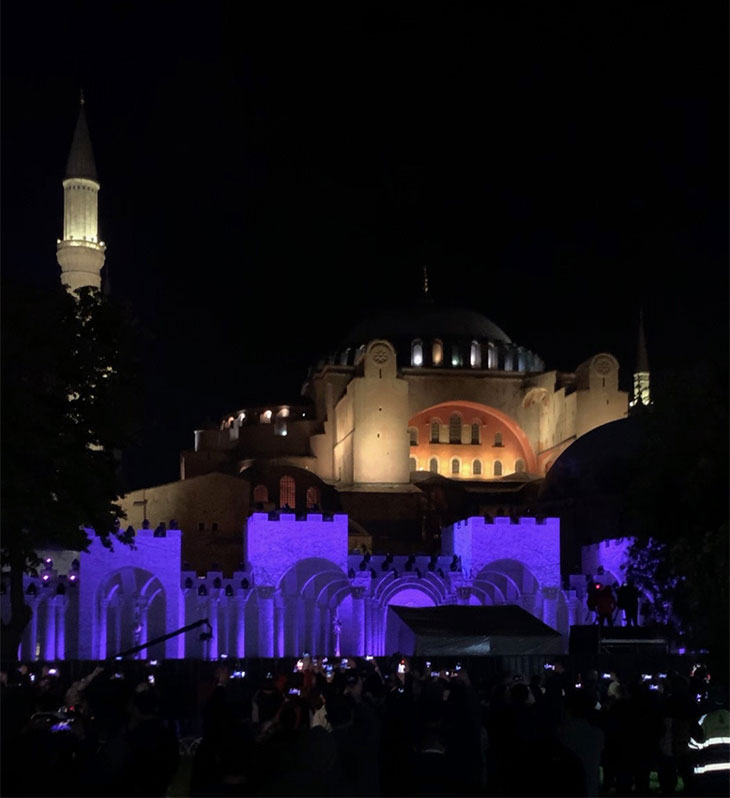
Hagia Sophia, Istanbul, photographed on 29 May 2020. Photo: the author
The significance of 29 May 1453 and the implicit biases in its recognition are reflected in the terms used to describe it. Most European languages characterise it, almost longingly, as a passive fall. In Turkish, however, it is firmly a fetih (conquest) and remembered as such. After all, this was the fetih that earned Sultan Mehmed his epithet Fatih (Conqueror), having fulfilled a famous foretelling of the Prophet Muhammad: ‘Truly, Constantinople will be conquered; how blessed and beautiful will that conqueror and his armies be.’
To Ottoman historians, such as the 15th-century chronicler Tursun Beg, the fetih exemplified Mehmed’s religious piety. Yet there is no evidence that its anniversary was commemorated in a specific way. Nor was it widely promoted in the early decades of the Turkish Republic, whose secular, Westernising social reforms sought to accentuate the young nation’s rupture with the Ottoman regime. Indeed, the contemporary observance of 29 May can be traced to the mid 1990s, concurrent with Erdogan’s term as mayor of Istanbul. It was initially organised by the right-wing Welfare Party (RP), an Islamist political organisation that has since been outlawed by Turkey’s high courts for violating the separation of religion and state. The RP embraced the date for polemical religious reasons, and it is from these origins that the festivities have evolved into their current form.
The central feature of the celebrations is an ephemeral wall, which, this year, was built directly south of Hagia Sophia, just outside the museum’s main gates. The crenellated towers and battlements of this wall are modelled after the city’s famed triple-tiered land walls, built in the fifth century under the Byzantine emperor Theodosius II. It was these walls, once thought impregnable, that the Ottoman forces overran on 29 May 1453 at the culmination of a 53-day siege. Usually, the wall is much bigger – wider and taller – and serves as a grand backdrop to performances staged before it. The version of the wall this year was considerably lower in height, with Hagia Sophia looming large just behind. This configuration framed Hagia Sophia as the object of the fetih – or, in Erdogan’s words, its ‘token’ or ‘souvenir’ (yadigâr). Indeed, the event was promoted by government ministries in no uncertain terms as the Hagia Sophia Conquest Feast (Ayasofya’nın Fethi Şöleni).
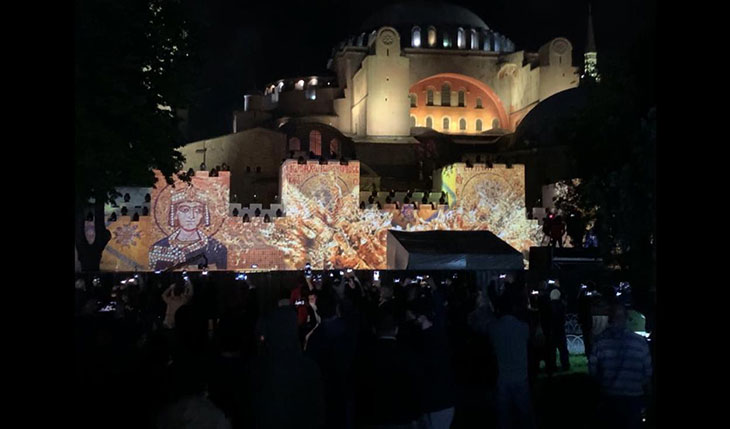
Hagia Sophia, Istanbul, photographed on 29 May 2020. Photo: the author
Since 2016, the ersatz wall has doubled as a shapely screen for a theatrical light show with projection-mapped 3D images telling the story of the fetih, accompanied by narration and punctuated by pyrotechnics. Byzantium, the tale’s antagonist, is represented visually in a succession of characteristically Byzantine stylistic forms and architectural elements. One memorable scene shows a pastiche of well-known imperial portraits and mosaics of Christ, stitched together with stock photos of medieval ornamental patterns to create an ad hoc throne room. Of the recognisable works contained in the pastiche, many are in Istanbul, most inside Hagia Sophia. Others, including mosaics from the baptistery in Florence and San Marco in Venice, are employed here owing to their shared Byzantine styles. In another scene, the city’s ‘timelessness’ (as the narration notes) is illustrated in a collection of ancient statue groups foregrounded by a bust of Constantine the Great, modelled from the colossus at the Capitoline Museums in Rome. In the end, none of this art fares well. The golden throne room is melted down into liquid. A sword blow shatters Constantine’s bust and all the antiquities crash to the ground.
The show concludes by highlighting how the fetih converted the city from the capital of a Christian empire to the seat of an Islamic caliphate. One still image shows Hagia Sophia; piece by piece, in a matter of seconds, its minarets are miraculously built. Urban renewal as an act of religious piety was emphasised by Erdogan in his 29 May address: ‘Conquest is not a symbol of destruction but of building, not of extermination but of revival […] We did not only conquer this city but also spent centuries adding to its beauty […] We decorated each of its neighbourhoods with different patterns; with our domes, minarets, fountains, and gardens. We lit up seven candles on its seven hills, adorned its throat [the Bosphorus] with necklaces […].’ With that, Erdogan linked Mehmed’s pious building projects to those realised under his own administration, such as the systematic restoration of the city’s major mosques and the controversial construction of a new mosque in a space considered hallowed ground for secular Turkey, Taksim Square.
The restoration of the city’s Islamic monuments coincides with the lead-up to the centennial of the founding of the Turkish Republic in 2023. The sight of Hagia Sophia almost bursting behind the ludicrously under-sized wall seems like a powerful metaphor for the endgame of the restoration campaign – there’s one big thing left to do and very little stands in the way. Erdogan concluded his speech thus: ‘I express gratitude to all my brothers who did not turn away from Hagia Sophia, the souvenir of the conquest, on this meaningful day.’
John Lansdowne is the Andrew W. Mellon postdoctoral fellow in Byzantine Studies at Boğaziçi University in Istanbul.
Unlimited access from just $16 every 3 months
Subscribe to get unlimited and exclusive access to the top art stories, interviews and exhibition reviews.

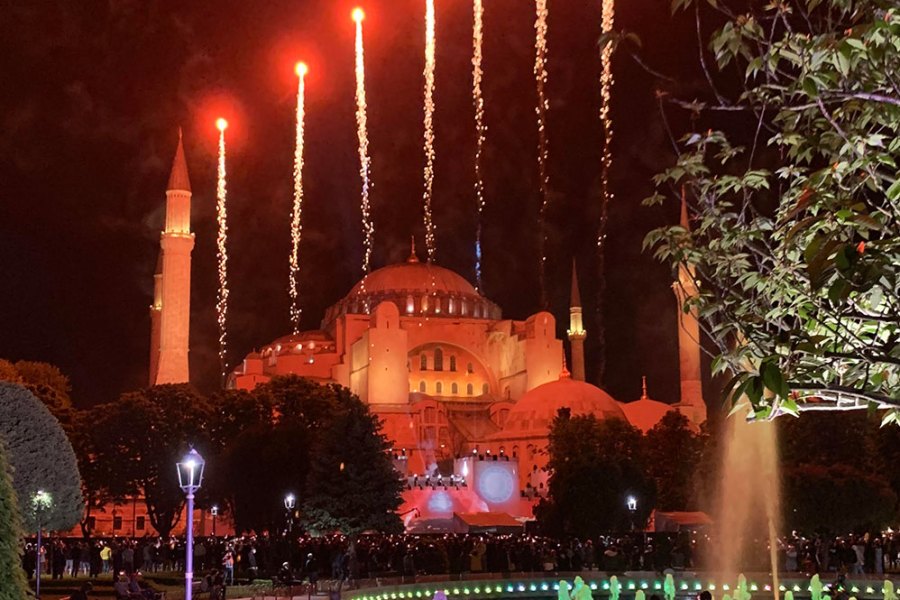
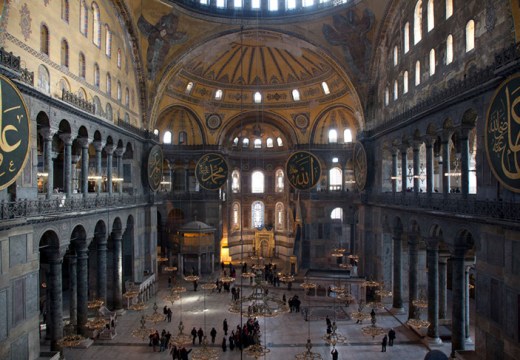
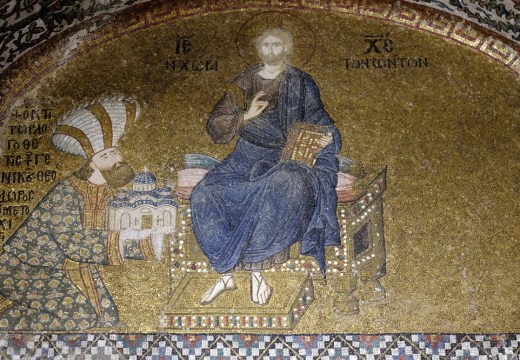
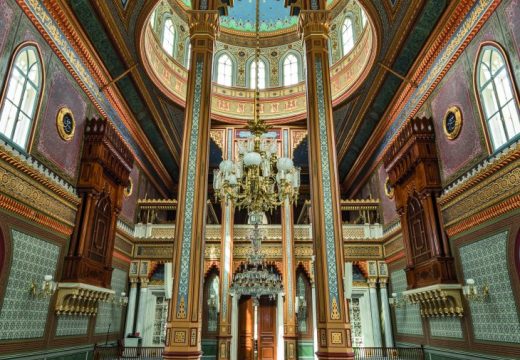









![Masterpiece [Re]discovery 2022. Photo: Ben Fisher Photography, courtesy of Masterpiece London](http://www.apollo-magazine.com/wp-content/uploads/2022/07/MPL2022_4263.jpg)
It’s time for the government of London to return to its rightful home